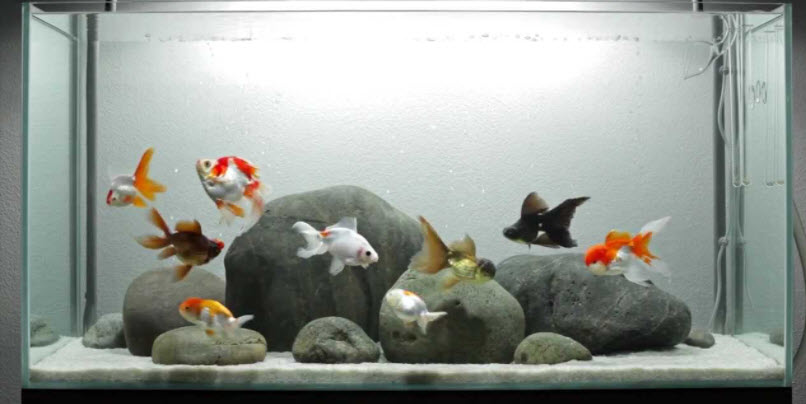
There are two distinct types of goldfish. The common, sarasa and shubunkin goldfish are one type of goldfish, which some call “narrow bodied goldfish”. These fish are easily kept under many different conditions, including overcrowded, small tanks with poor water quality. They can live to be 20 or even 30 years old.
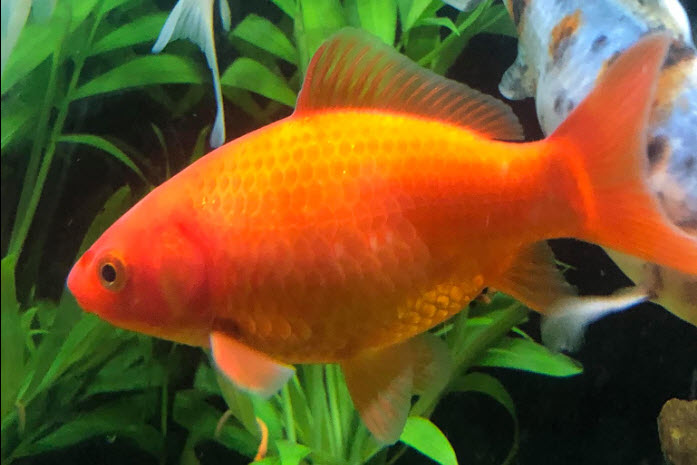
“Fancy goldfish” or “wide bodied goldfish” are more properly called “genetic dwarf goldfish”. Fancy goldfish have a genetically induced very short spine which result in a body shape best described as like a golf ball, i.e. very round.
Fancy goldfish are completely different fish than the narrow bodied goldfish. They are inbred and genetically weak and need different conditions than narrow bodied goldfish. Genetically dwarfed goldfish have significantly shorter lifespans than common goldfish.
This dimorphism has led to a lot of confusion when it comes to goldfish.

Common Goldfish
The common goldfish is a fish with a single tail and a sleek body. Some call it the “narrow bodied goldfish”. This is the “feeder goldfish” found by the thousands in a tank in your local fish store. It is the fish given away by the millions in fairs all around the world.
The common goldfish has been kept in overcrowded ponds under very polluted conditions for over 1,000 years in China (Some folks claim 1,700 years). The common goldfish has been bred in small earthenware and ceramic containers in China for close to 500 years.
This is a photo of a typical Chinese goldfish bowl:

This bowl is about ten gallons with no filtration and no aeration. There were thousands of these bowls used in early China for admiring goldfish.
The Chinese keepers of these fish knew nothing about filtration or the nitrogen cycle. The conditions in those earthenware and ceramic containers were very crowded and very polluted. Each generation of goldfish was selected by their environment, with only fish capable of surviving in that environment surviving to pass on their genes. This is called “inadvertent selective breeding”.
This “inadvertent selective breeding” has made the common goldfish unique in many ways. It thrives in crowded polluted conditions. It’s been doing just that for more than 1,000 years! The common goldfish is the best beginner fish there is. They will thrive under very poor water conditions in incredible crowding. One only look to the feeder goldfish tank at the local fish store to see that this is true.

Hundreds of fish in a tank with all being healthy, active, swimming well, and apparently “thriving”. Any other fish would be dying from oxygen deprivation at those stocking ratios.
We recently had an opportunity to visit the home of a young couple with some small kids. They has a small five gallon aquarium. It had no filter, no substrate, no aeration and only a few ceramic decorations. It had two four inch common goldfish in it. We asked some basics. They didn’t know what a water change was. They only added water when it evaporated. They had had the fish for four years or so. The kids fed the fish “when they felt like it”.
The water in this tank was a semi cloudy yellowish brown color with a cruddy film across the top. In our rush to help the fish we didn’t think to measure the parameters but we’re sure EVERYTHING was absolutely off the charts.
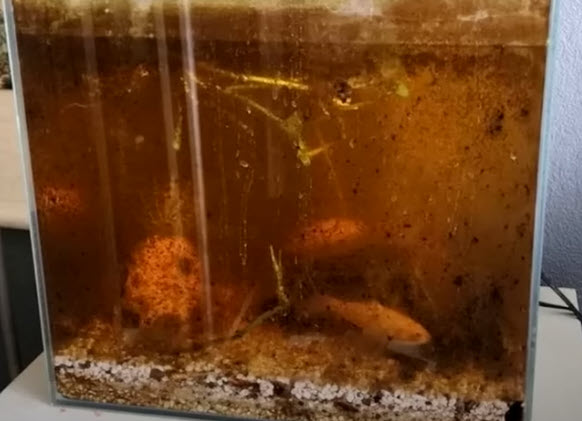
The goldfish were oblivious to how they were living. They were fat, with no hollow belly. They were swimming vigorously. And they had no sores or signs of disease. And they had been this way for FOUR years!
No other aquarium fish can do this. Any other aquarium fish would have been long dead with these parameters. This is just an illustration of how forgiving common goldfish are.
Note we don’t advocate putting goldfish in aquariums without decent aeration and a decent filter or putting goldfish in small bowls. That might not kill a common goldfish but it will can easily result in diseases and an early demise of the goldfish. A reasonable modicum of care is called for for all fish.
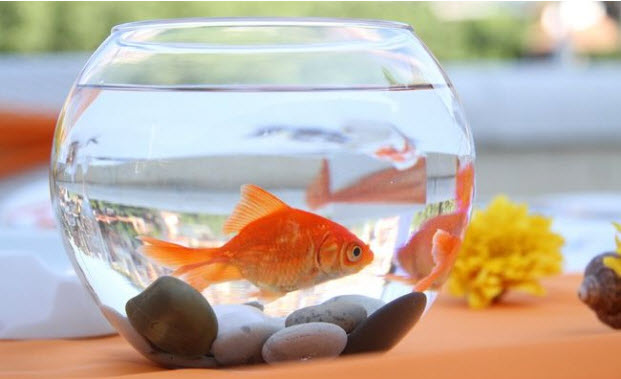
The comet and the sarasa goldfish are versions of the narrow bodied goldfish with very long flowing tails. Shubunkin is a mottled “calico” version of the narrow bodied goldfish. They are all much like the common goldfish and everything said here-in about the common goldfish also applies to them.
The comet goldfish can live in very cramped conditions. A pet store in Bristol Connecticut once had a 40 gallon aquarium in its window with 6 nine-inch-long (including tail) comet goldfish in it. They were gorgeous and healthy, swimming well with long flowing fins. The water was well filtered and crystal clear. They were clearly healthy and thriving.
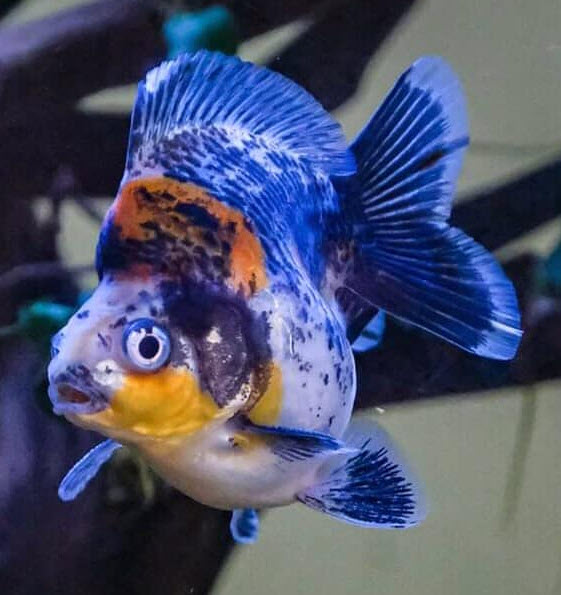
Fancy Goldfish
The second type of goldfish is the genetically dwarfed variety, sometimes called a “fancy” variety. This is a much different fish than a common goldfish.
The common goldfish has been bred by the Japanese into some very different types of goldfish. Where the problem come in is with the “fancy” breeds which are best described as “genetic dwarf goldfish”. These fish have a spine which stops growing at a very small size. But their organs do continue to grow, giving the fish the characteristic very fat appearance. These fish are literally spherical, round, just like a ball with fins.
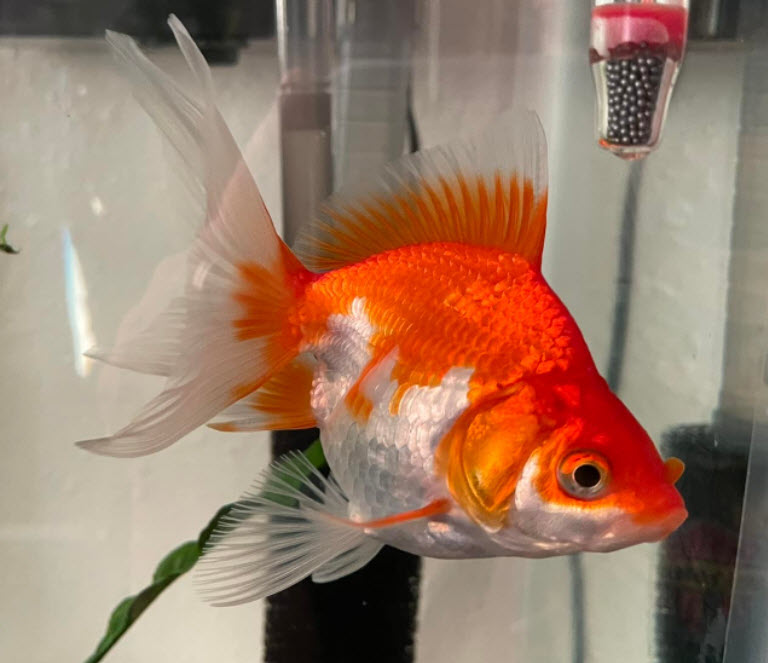
This is where the “in a small tank fish stop growing but their organs don’t” myth came about. And it is true that these fat fish are less healthy than the sleek common goldfish but the problem is genetic, not environmental. A small aquarium doesn’t cause the fat body shape. A small aquarium does NOT cause the spine to become deformed. The spine becomes deformed in a fancy or part fancy goldfish due to genetics.
Fancy goldfish are completely different fish than the narrow bodied goldfish. They are inbred and genetically weak and need different conditions than narrow bodied goldfish. Genetically dwarfed goldfish have significantly shorter lifespans than common goldfish.

Highly inbred “genetic dwarf” goldfish need good conditions as they are genetically weak to begin with, with compressed organs and compromised immune systems. Specifically the digestive system tends to plug easier and the internal organs can become infected easily. This means dropsy and swim bladder problems are very common in these fish.
Almost all pearlskin oranda fancy goldfish get swim bladder problems and either float to the top or the bottom of the tank.
Some fancy goldfish have growths on their head so massive they must be hand fed. Others have bulbous eyes easily damaged by other fish or ornaments in the aquarium.
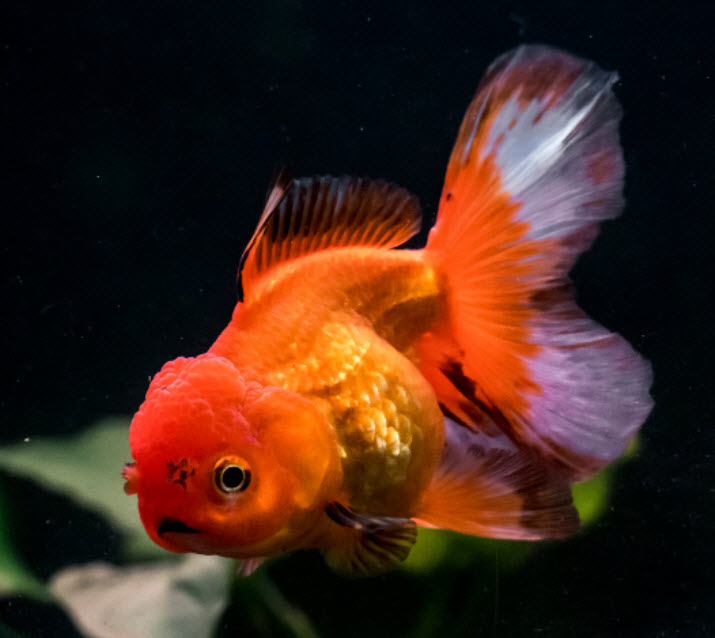
These fancy goldfish are different in their requirements than the common goldfish. The inbreeding which has produced the fancy goldfish has had exactly the opposite effect that the breeding of common goldfish has had. Regular narrow bodied goldfish are extremely easy to keep. Fancy goldfish are hard to keep.
Many find fancy goldfish to be a very difficult fish to keep. Cory of Aquarium Co-op, probably the most knowledgeable fish keeper around, believes fancy goldfish to be harder to keep than discus. Fancy goldfish only live an average of about eight years compared to the common goldfish which typically can live an average of fifteen years.
Goldfish Variations
There is of course a continuum between the sleek “narrow bodied” common goldfish and the genetic dwarf “fancy” goldfish with thousands of variations.
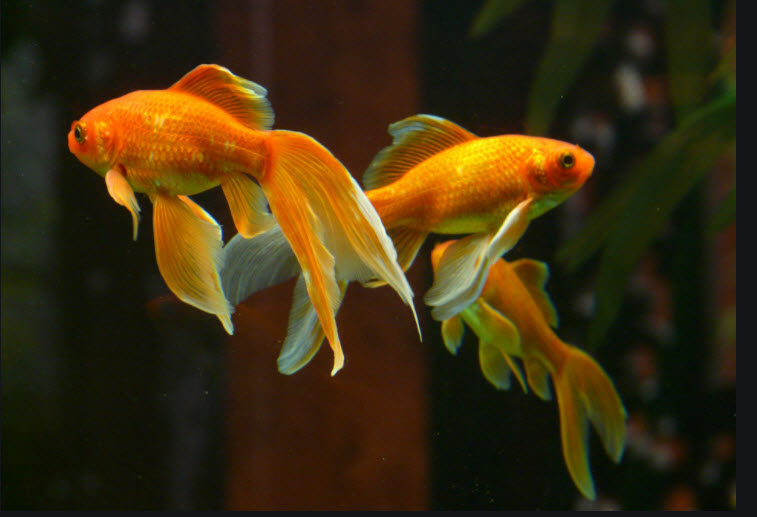
There are some varieties like the veiltail, wakin, jikin, black moor and fantail which have forms which might better be described as “egg shaped”. These fish are about halfway between a narrow bodied and a fancy in their requirements. The shorter the spine and the fatter the body of a goldfish the greater the degree of difficulty. Note some of these varieties range from narrow bodied to round bodied and are all called the same variety.
And all types of goldfish can be mixed in any given aquarium, just as goldfish can be mixed with other peaceful fish freely. It is important to filter and size the aquarium to the weakest link. So if one stocks fancies with common, stock and filter to the fancy level.
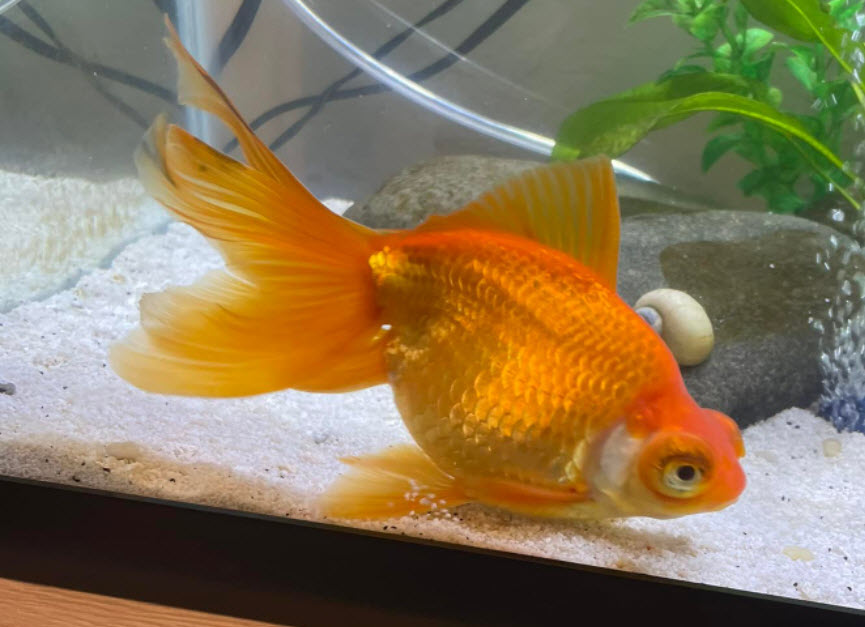
Further Articles on Goldfish
For those wanting to delve deeper into keeping goldfish one can go to the following links:
17.5.2. Size of Goldfish
17.5.3. Stocking Goldfish
17.5.4. Goldfish Care
.
Return to the Goldfish Main Menu
.
Aquarium Science Website
The chapters shown below or on the right side in maroon lead to close to 400 articles on all aspects of keeping a freshwater aquarium. These articles have NO links to profit making sites and are thus unbiased in their recommendations, unlike all the for-profit sites you will find with Google. Bookmark and browse!
.

Dave says
In reply to David …. Fantails are considered almost as easy as the common goldfish.
David says
The long-bodied goldfish aren’t as attractive in my opinion, but neither are the severely deformed varieties. I am interested in something in between, like the the regular fantails, more egg shaped, but with cute swimming style. How hard would fantails be to keep, compared to the the long-bodied goldfish?
(I have successfully kept mixed tanks of tropical fish)